Biology Reference
In-Depth Information
identified as P-deficiency tolerant, based on its
superior P uptake from a highly P-fixing soil
(Figure 5.2a). Although Dular, likewise an
aus
-
type variety, was more tolerant, Kasalath was
chosen since bacterial artificial chromosome
(BAC) libraries were available, which later facil-
itated sequencing of the
Pup1
locus (see below).
The
japonica
-type variety Nipponbare was used
as the intolerant parent for the development of a
mapping population, and the
Pup1
region on Chr.
12 was shown to significantly enhance P uptake
and plant performance under the applied screen-
ing conditions (Figure 5.2b, c; Wissuwa and Ae
2001b; Wissuwa et al. 2002). An intermediate-
effect QTL at the tip of Chr. 6 was additionally
identified, and it was shown that this region con-
tains a cluster of P-response genes (Heuer et al.
2009), including
OsPTF1
, a transcription factor
gene that was shown to enhance plant perfor-
mance under P deficiency (Yi et al. 2005). In
contrast, none of the currently known P-response
genes was located within or near the
Pup1
region,
based on an analysis of the Nipponbare refer-
ence genome (Heuer et al. 2009). In agreement
with this, physiological studies of Nipponbare-
Pup1
near-isogenic lines (NILs) failed to reveal
commonly known P-starvation responses, such
as exudation of organic acids or elongation of
(b)
Intermediate QTL
(a)
14
12
Kasalath
10
8
6
Nipponbare
4
2
Major QTL
Pup1
0
(c)
Nipponbare
Nipponbare-
Pup
1
Fig. 5.2.
Mapping of the
Pup1
major QTL.
A screening of 30 diverse rice accessions under P-deficient field
conditions was conducted to identify genotypes with high P-uptake ability (
a
). The data were derived from Wissuwa
and Ae (2001a). QTL mapping was conducted using a Kasalath x Nipponbare mapping population and
Pup1
was
identified as a large-effect QTL on Chr. 12 (
b
). An intermediate-effect QTL is located on Chr. 6 (Wissuwa et al. 1998;
see text for details). Nipponbare and a tolerant near-isogenic line with the
Pup1
QTL were grown in a P-deficient
field in Tsukuba, Japan (
c
). For a color version of this figure, please refer to the color plate.





Search WWH ::

Custom Search